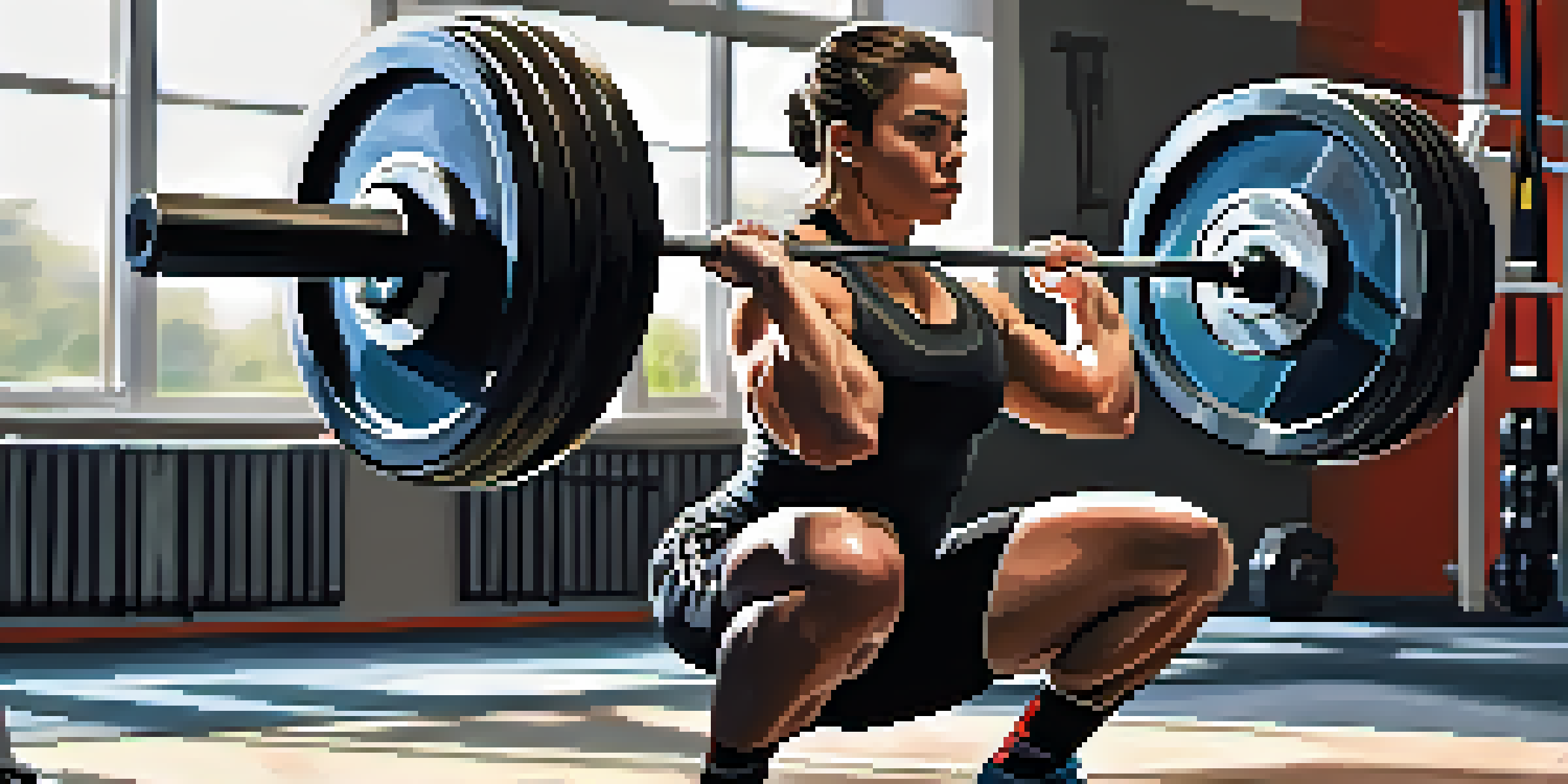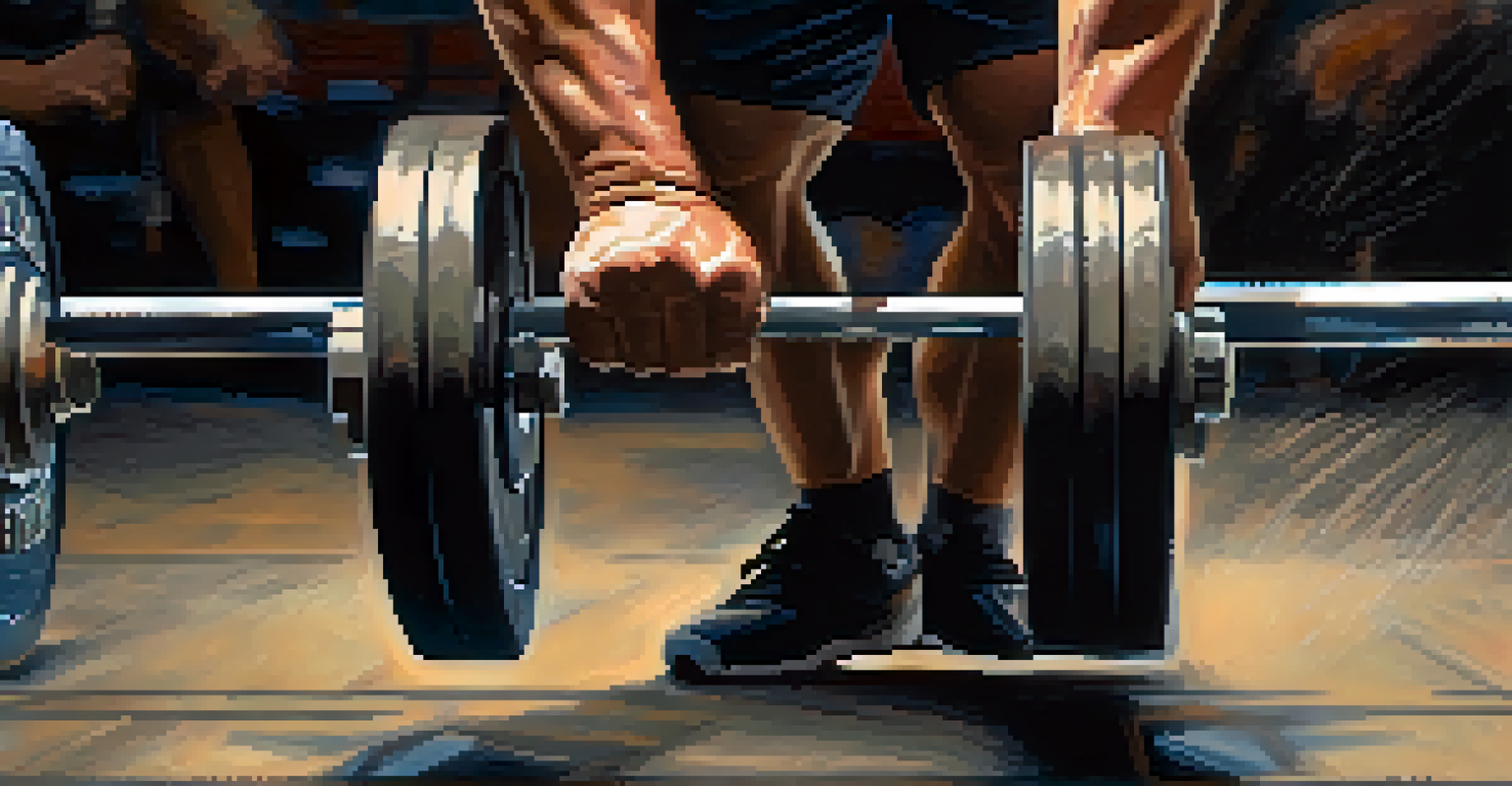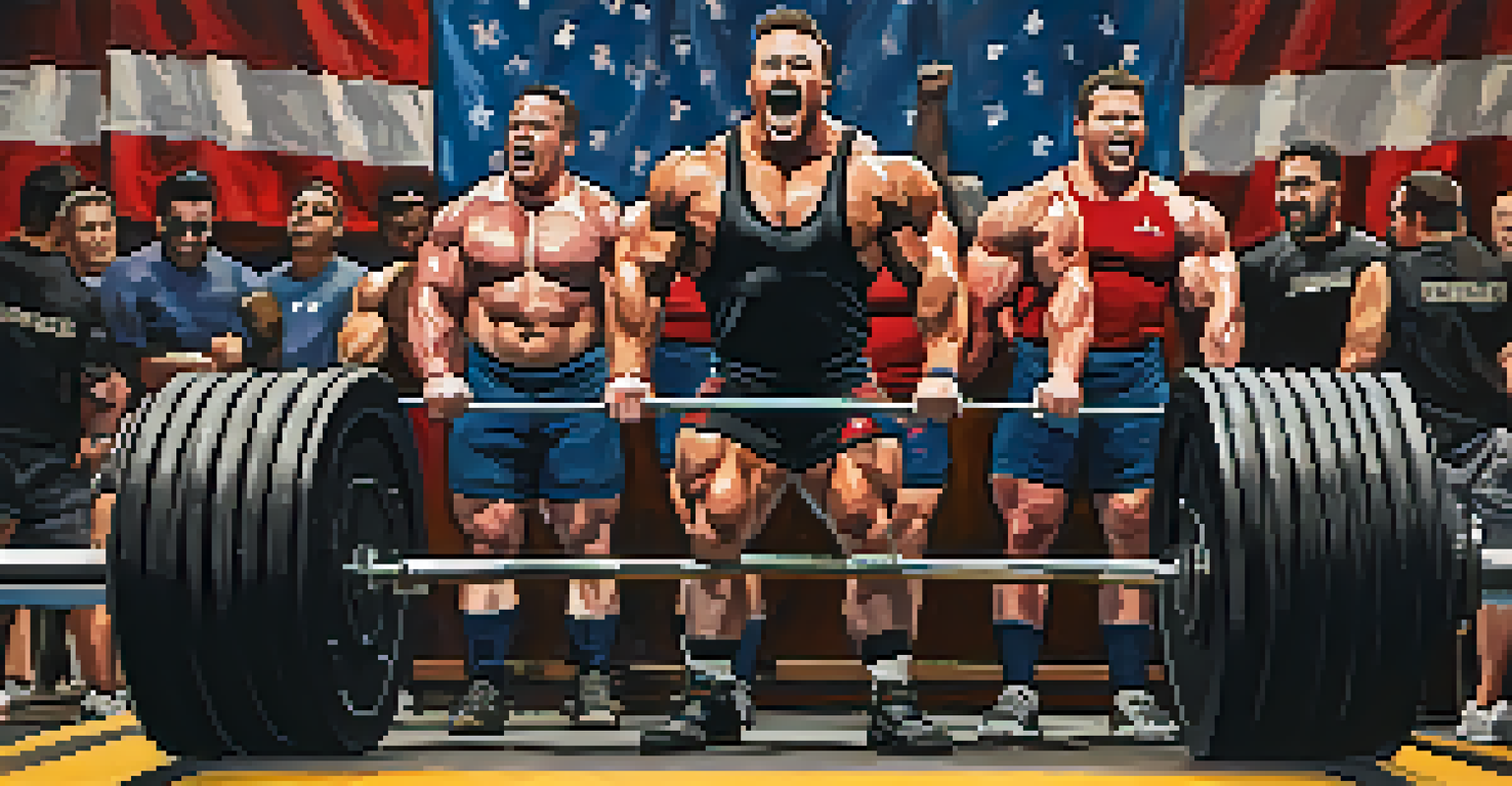Understanding Powerlifting: Key Terms Explained

What is Powerlifting and Its Competitive Nature?
Powerlifting is a strength sport focused on three main lifts: the squat, bench press, and deadlift. Each lifter aims to lift the maximum weight possible in these movements, typically performed in a competitive setting. The beauty of powerlifting lies not just in brute strength, but in the technique and strategy behind each lift.
Strength does not come from physical capacity. It comes from an indomitable will.
Competitions are usually structured in weight classes, ensuring a fair contest among lifters of similar sizes. This means that lifters compete against others who are in the same weight range, making the sport accessible to a wider range of participants. Whether you’re lifting for personal achievement or aiming for the podium, the competitive element can be a significant motivator.
Understanding these foundational elements can help beginners appreciate the sport's complexity. It’s about more than just lifting heavy weights; it’s about refining techniques, building mental toughness, and embracing a supportive community.
The Big Three: Squat, Bench Press, and Deadlift Explained
The squat, bench press, and deadlift are the three lifts that define powerlifting. Each lift targets different muscle groups and requires distinct techniques. For example, the squat primarily works the legs and lower body, while the bench press focuses on the chest, shoulders, and triceps.

During the squat, the lifter descends into a seated position before rising back up, emphasizing the importance of proper form to prevent injury. The bench press, on the other hand, has the lifter lying on their back and pushing a weighted barbell upwards, which requires stability and control.
Powerlifting: More Than Just Strength
Powerlifting combines technique, strategy, and community support, making it a multifaceted sport beyond merely lifting heavy weights.
Finally, the deadlift involves lifting a barbell from the ground to hip level, engaging the entire body. Mastering these lifts is crucial for any aspiring powerlifter, as they form the basis of performance in competitions.
Understanding Weight Classes in Powerlifting Competitions
Weight classes play a vital role in powerlifting, ensuring that lifters compete against others of similar body weight. This structure helps level the playing field, allowing for fairer competition and encouraging lifters of all sizes. For instance, a lightweight lifter has a chance to shine against fellow lifters within their own class.
The only way to prove you are a good sport is to lose.
Different federations have varying weight classes, which can influence how athletes approach their training and nutrition. Some lifters may aim to compete in a specific class, adjusting their weight through diet or training to meet those criteria. This strategic aspect adds another layer of complexity to the sport.
Understanding weight classes can also help lifters set realistic goals. Rather than focusing solely on lifting heavy weights, lifters can consider their weight class and how it affects their performance, leading to a more tailored and effective training regimen.
Common Powerlifting Terminology: A Beginner's Guide
Like any specialized sport, powerlifting has its own set of terms and jargon that can be confusing for newcomers. Familiarizing yourself with this vocabulary can enhance your understanding and communication within the powerlifting community. Terms like 'PR' (personal record) and 'max effort' are commonly used to describe achievements and training intensity.
Another key term is 'openers,' which refers to the first lift a competitor attempts in a meet. This lift is crucial as it sets the tone for the rest of the competition. Understanding these terms can help demystify the sport and make your experience more enjoyable.
Technique is Key to Success
Proper technique in powerlifting not only enhances performance but also reduces the risk of injury, emphasizing the importance of coaching and practice.
By learning the lingo, you’ll not only feel more confident in conversations but also gain insights into training techniques and strategies. This knowledge can empower you to connect with experienced lifters and coaches who can further guide you on your powerlifting journey.
The Importance of Technique in Powerlifting Success
Technique is paramount in powerlifting, as it directly influences performance and safety. Proper form allows lifters to maximize their lifting potential while minimizing the risk of injury. For instance, a well-executed squat involves keeping the back straight and knees aligned, which is crucial for effective lifting.
Many lifters find that investing time in perfecting their technique pays off in the long run. This is where coaching can be incredibly beneficial; a knowledgeable coach can provide personalized feedback and help refine lifting form. Regular practice with a focus on technique is key to improvement.
Moreover, as lifters progress and increase their weights, maintaining proper technique becomes even more essential. The heavier the load, the more challenging it can be to keep form in check. Thus, a strong foundation in technique not only aids performance but also fosters a safer lifting environment.
The Role of Nutrition in Powerlifting Performance
Nutrition plays a critical role in a powerlifter's journey, impacting energy levels, recovery, and overall performance. A balanced diet rich in protein, carbohydrates, and healthy fats is essential for building strength and muscle. For instance, protein helps repair and grow muscles after intense training sessions.
Many powerlifters also pay attention to their caloric intake to ensure they meet their weight class requirements. This can involve tracking macronutrients and adjusting food choices to support training goals. Understanding how nutrition affects performance can empower athletes to make informed dietary choices.
Nutrition Fuels Performance
A balanced diet and proper hydration are crucial for powerlifters, significantly influencing their energy levels, recovery, and overall performance.
Additionally, proper hydration is crucial in any athletic endeavor, including powerlifting. Dehydration can lead to decreased performance and increased risk of injury, making it essential for lifters to stay hydrated before, during, and after workouts.
Mental Toughness: The Psychological Aspect of Powerlifting
Mental toughness is an often-overlooked aspect of powerlifting that can significantly impact performance. The sport demands not only physical strength but also mental resilience. Lifters often face challenges, from pushing through discomfort during a lift to overcoming the fear of attempting heavier weights.
Developing a strong mindset can help athletes push past their limits and achieve their goals. Techniques such as visualization and positive self-talk can enhance focus and motivation. For example, visualizing a successful lift can create a mental blueprint that aids in actual performance.

Moreover, the supportive community in powerlifting can bolster mental strength. Training with others and sharing experiences can provide encouragement and accountability, making the journey more enjoyable and less isolating.